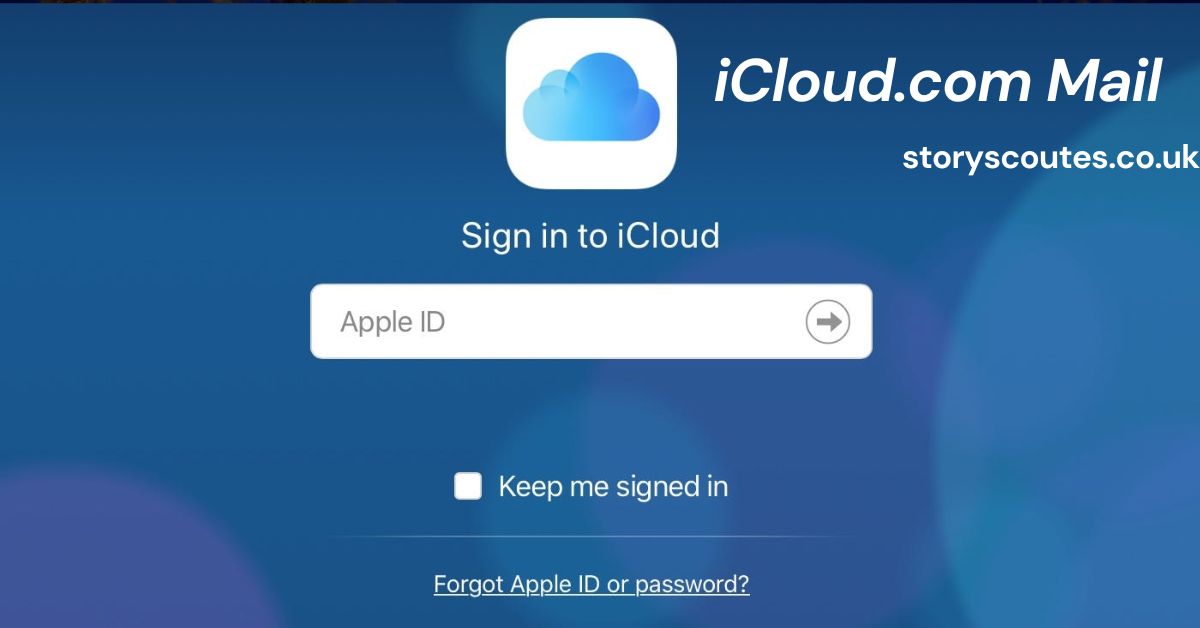iCloud.com Mail: A Comprehensive Guide
In today’s digital age, email is an essential tool for communication, enabling us to connect with friends, family, and colleagues efficiently. iCloud.com mail offers users a seamless email experience integrated with Apple’s ecosystem. This article will explore everything you need to know about iCloud.com mail, from its features and benefits to setup and usage tips. Whether you’re new to Apple products or looking to optimize your email experience, this guide is designed for you.
A Brief History of iCloud
Apple introduced iCloud in 2011, marking a significant step in cloud computing and digital services. The service evolved from MobileMe, aiming to provide users with a unified platform for all their digital needs, including email, storage, and synchronization across devices. Over the years, iCloud.com mail has become a reliable and efficient email service, especially for users deeply embedded in the Apple ecosystem.
Importance of Email in the Digital Age
Email remains one of the primary means of communication for both personal and professional interactions. With the rise of remote work and digital collaboration, having a reliable email service is crucial. iCloud.com mail offers a user-friendly interface and integrates well with other Apple services, making it a popular choice among users in the USA and beyond.
What is iCloud.com Mail?
iCloud.com mail is Apple’s web-based email service that allows users to send, receive, and manage emails through their iCloud accounts. Launched in 2011, it replaced the previous MobileMe service and has since become a core component of Apple’s iCloud suite. With iCloud.com mail, users can access their email from any device with an internet connection, making it a convenient choice for those who use Apple products.
How iCloud.com Mail Works
When you set up an iCloud.com mail account, you create an Apple ID, which serves as your login credential. Your email address typically takes the form of username@icloud.com. You can send and receive emails using the web interface at iCloud.com or through the Mail app on your Apple devices.
Comparing iCloud.com Mail with Other Email Services
When evaluating iCloud.com mail against other popular email services such as Gmail and Outlook, several aspects come into play:
- User Interface: iCloud.com mail offers a clean and minimalist interface, focusing on usability. Gmail, while feature-rich, can feel cluttered, and Outlook’s interface may take time to navigate for new users.
- Integration with Ecosystem: iCloud.com mail excels in integration with other Apple services, making it ideal for users who utilize iOS, iPadOS, and macOS.
- Privacy and Security: Apple emphasizes user privacy and data security more than many competitors. iCloud.com mail uses end-to-end encryption, ensuring your communications are protected.
Key Features of iCloud.com Mail
- User-Friendly Interface
The interface of iCloud.com mail is designed for ease of use. With a clean layout and intuitive navigation, users can easily access their inbox, compose emails, and organize their messages. - Integration with Apple Ecosystem
If you use Apple devices like iPhones, iPads, and Macs, iCloud.com mail seamlessly integrates with these devices. This integration allows for features like syncing emails, contacts, and calendars across all your devices. - Ample Storage Space
Each iCloud account comes with 5GB of free storage. This storage can be used for emails, photos, and documents. If you need more space, you can upgrade your storage plan. - Robust Security Features
Apple prioritizes user security. iCloud.com mail employs advanced encryption methods to protect your data. Additionally, two-factor authentication adds an extra layer of security to your account. - Customizable Email Settings
Users can customize their email experience with various settings, including email forwarding, filters, and signatures. This level of customization allows you to manage your emails according to your preferences. - VIP Contacts
With the VIP feature, users can mark important contacts to receive notifications specifically for their emails. This ensures you never miss a message from your most important connections. - Threaded Conversations
iCloud.com mail groups email replies and messages into a single thread, making it easy to follow conversations without cluttering your inbox. - Search Functionality
The powerful search feature helps you quickly find emails by sender, subject, or keywords, making it easier to locate important information.
Benefits of Using iCloud.com Mail
Using iCloud.com mail offers several benefits:
- Accessibility: You can access your email from any device with an internet connection, making it easy to stay connected.
- Synchronization: Changes made on one device reflect across all devices, ensuring you have the latest information.
- Apple Ecosystem Integration: If you’re already using other Apple services, iCloud.com mail fits seamlessly into your digital life.
- User-Friendly Design: Even if you’re not tech-savvy, you’ll find it easy to navigate and manage your emails.
- Privacy and Security: With Apple’s focus on privacy, iCloud.com mail offers a secure environment for your communications.
User Testimonials
Many users appreciate the integration of iCloud.com mail with other Apple services. For instance, one user noted that “having all my emails, contacts, and calendar events synced effortlessly across my devices saves me a lot of time and hassle.” This level of integration is often cited as a major reason for choosing iCloud.com mail over other services.
Setting Up Your iCloud.com Mail Account
Step 1: Create an iCloud Account
To use iCloud.com mail, you first need to create an iCloud account. Here’s how:
- On an Apple Device:
- Go to Settings.
- Tap on your name at the top.
- Select iCloud and follow the prompts to create an account.
- On a Windows Computer:
- Download and install iCloud for Windows.
- Open the application and sign in with your Apple ID.
- Follow the prompts to set up your iCloud account.
Step 2: Accessing iCloud.com Mail
Once you have your account set up, you can access iCloud.com mail:
- Open your web browser.
- Go to iCloud.com.
- Sign in with your Apple ID and password.
- Click on the Mail icon to access your inbox.
Step 3: Setting Up Email Preferences
After logging into iCloud.com mail, you can customize your settings:
- Click on the gear icon in the lower-left corner to access Preferences.
- Set your email signature, manage your inbox settings, and adjust other preferences to fit your needs.
Navigating iCloud.com Mail
Understanding the Interface
When you first log into iCloud.com mail, you’ll see a user-friendly interface with several sections:
- Inbox: Your main email folder where you receive new messages.
- Folders: Organize your emails by creating folders for different topics or projects.
- Compose: Click this button to create a new email.
- Search Bar: Quickly find specific emails by typing keywords into the search bar.
Composing and Sending Emails
To send an email using iCloud.com mail, follow these simple steps:
- Click on the Compose button.
- Enter the recipient’s email address in the “To” field.
- Add a subject line in the “Subject” field.
- Write your message in the body area.
- Click Send when you’re ready to send the email.
Organizing Your Inbox
To keep your inbox organized, consider the following tips:
- Use folders to categorize your emails (e.g., Work, Personal, Travel).
- Mark important emails with the VIP feature.
- Utilize filters to automatically sort incoming emails.
Advanced Features of iCloud.com Mail
Using Tags and Flags for Organization
iCloud.com mail allows you to use tags and flags to prioritize emails. Flags can help you quickly identify important messages, while tags can categorize emails based on themes or projects.
Integrating iCloud Calendar and Contacts
iCloud.com mail works seamlessly with your iCloud calendar and contacts. You can add events and access contact information directly from your email, making scheduling meetings and sending invitations straightforward.
Using Mail Rules to Automate Your Inbox
Mail Rules are powerful tools that help you automate email management. You can set up rules to automatically move incoming emails to specific folders, mark them as read, or even forward them to another address. Here’s how to create a mail rule:
- Go to the Mail settings.
- Click on the Rules tab.
- Select Add a Rule.
- Specify the conditions for the rule (e.g., sender, subject).
- Choose the actions that should occur when the conditions are met (e.g., move to folder, mark as read).
- Save the rule.
Email Aliases for Enhanced Privacy
If you want to keep your main email address private, iCloud.com mail allows you to create email aliases. An alias is an alternate email address that forwards messages to your main inbox. This is useful for signing up for newsletters or online services without sharing your primary email.
Troubleshooting Common Issues
Issue 1: Can’t Access iCloud.com Mail
If you’re having trouble accessing your iCloud.com mail, try the following:
- Ensure you’re entering the correct Apple ID and password.
- Check your internet connection.
- Try clearing your browser cache or using a different browser.
Issue 2: Emails Not Syncing
If your emails aren’t syncing across devices:
- Ensure you’re logged into the same Apple ID on all devices.
- Check the iCloud settings on each device to ensure Mail is enabled.
Issue 3: Forgetting Your Password
If you forget your password, you can reset it by following these steps:
- Go to the Apple ID account page.
- Click on Forgot Apple ID or password?
- Follow the prompts to reset your password.
Issue 4: Emails Going to Spam
If important emails are going to your Spam folder, check your Spam settings and mark these emails as “Not Spam” to help improve future filtering.
Security Features of iCloud.com Mail
Apple takes security seriously, implementing several measures to protect your data:
- Two-Factor Authentication: This feature adds an extra layer of security, requiring a verification code in addition to your password.
- Data Encryption: Emails sent and received through iCloud.com mail are encrypted both in transit and at rest, ensuring your data remains private.
- Privacy Policies: Apple’s commitment to user privacy means they do not sell your data to third parties.
Understanding Privacy and Data Protection
Apple’s privacy philosophy emphasizes user control over personal data. With iCloud.com mail, users can manage their data settings, choose what to share, and understand how their information is used.
Reporting Phishing and Spam
If you receive suspicious emails that may be phishing attempts, report them to Apple. Click the Report Junk option to alert Apple and protect other users from similar scams.
The Future of iCloud.com Mail
As technology evolves, so does iCloud.com mail. Apple is continuously updating its services, and users can expect more integrations with emerging technologies, enhanced security features, and improved user experience. Keeping an eye on announcements from Apple will help you stay updated on any new features.
Potential Developments to Watch
- Enhanced AI Features: Apple may incorporate AI to improve email sorting and prioritization, making it even easier for users to manage their inboxes.
- Integration with Other Apps: Expect better integration with third-party applications, allowing for smoother workflows and more productivity tools.
- Sustainability Initiatives: Apple has made a commitment to environmental sustainability, and future updates to iCloud services may reflect these goals.
FAQs about iCloud.com Mail
How do I change my iCloud email address?
You cannot change your iCloud email address directly. You can create a new Apple ID with a different email address if necessary.
Can I access iCloud.com mail on Android devices?
Yes, you can access iCloud.com mail using a web browser on any device, including Android.
What happens if I exceed my iCloud storage limit?
If you exceed your storage limit, you will not be able to send or receive emails until you free up space or upgrade your storage plan.
Is iCloud.com mail free?
Yes, creating an iCloud account and using iCloud.com mail is free, but additional storage beyond the initial 5GB may require a subscription.
How can I recover deleted emails?
Deleted emails are stored in the Trash folder for 30 days. You can recover them by going to the Trash, selecting the email, and clicking Move to Inbox.
Can I set up an iCloud.com mail account without an Apple device?
Yes, you can create an iCloud account on a Windows PC by downloading iCloud for Windows, but having an Apple device makes the process easier.
How do I manage my email storage?
Regularly delete old emails and empty your Trash folder to manage your storage effectively. You can also review your attachments and remove large files.
What should I do if I encounter spam?
Report spam emails using the Report Junk feature to help improve spam filtering for yourself and other users.
Conclusion
iCloud.com mail is a powerful, user-friendly email service that provides seamless integration with Apple’s ecosystem. With robust security features, customizable settings, and easy access across devices, it’s an excellent choice for anyone looking to streamline their email experience. By following the tips and guidelines in this comprehensive guide, you can make the most of your iCloud.com mail account and enhance your digital communication.






